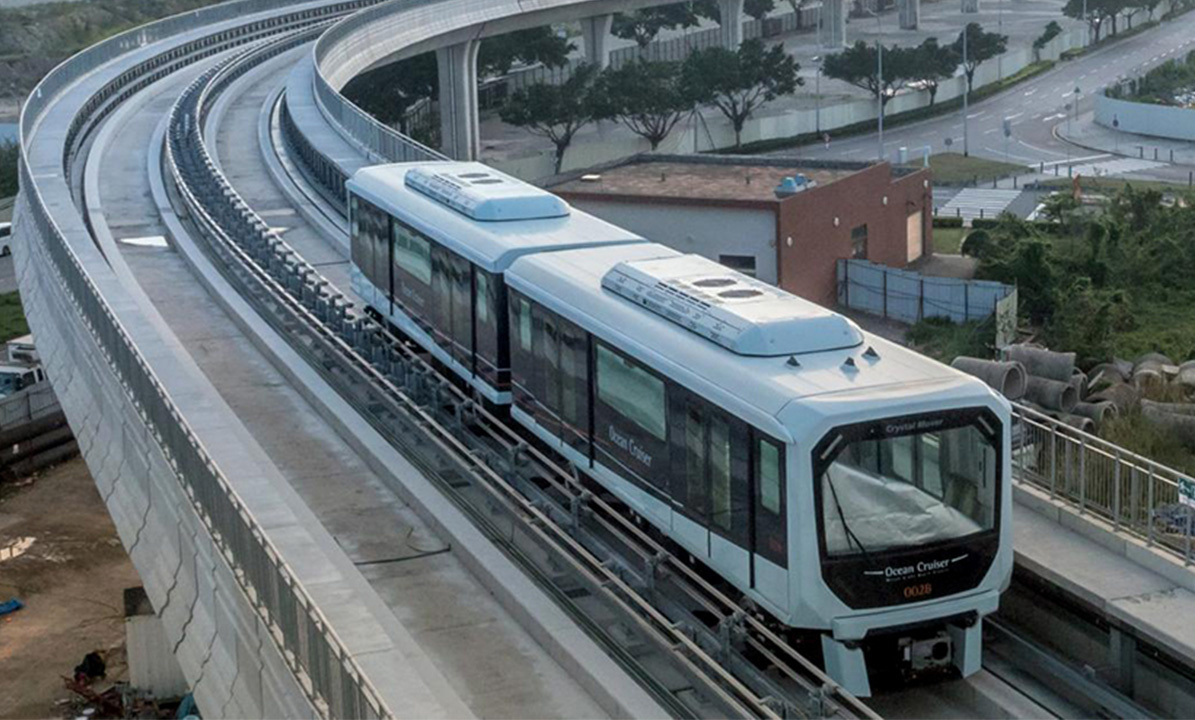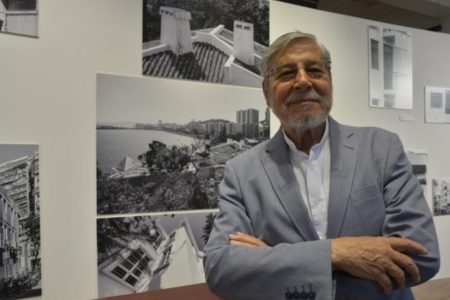The Taipa section of the long-delayed Light Rail Transit (LRT), which also covers Cotai, will finally start service this Tuesday afternoon, and passengers can take rides free of charge until December 31, the government-owned operator has announced.
According to a statement on Friday by the operator, officially named “Macao Light Rapid Transit Corporation, Limited” in English, Macau’s first-ever railway will be inaugurated this morning, and the first ride will depart from the Taipa Ferry Terminal station – the eastern terminus of the Taipa section – at 3:33 p.m.
During the three-week free-of-charge period, passengers need to obtain a one-way ticket from LRT staff at ticket gates to enter the paid area to take a ride, the statement said.
The statement said that the company will announce the LRT fare system in due course.
The government has indicated that the LRT fare system will be similar to the city’s public bus fare system – passengers will have to pay a full fare when using a ticket while they will have a discounted fare when using a stored-value LRT card. However, the government has also indicted that there will be a major difference between the two fare systems – the actual LRT fare will depend on the number of stations a passenger passes on a trip – which is different from the public bus fare system which charges a single fare irrespective of the number of bus stops during a passenger’s bus ride. The government has also said that the LRT fares will be a little bit higher than the public bus fares.
The government has spent 11 billion patacas on the LRT Taipa section project, including the construction, the rolling stock and the setting-up of the system.
The LRT was first proposed by the government in the early 2000s. However, the main construction – the Taipa section – only started in 2012.
The LRT project, namely the first phase consisting of the Taipa section and a section along the east coast of the peninsula, was initially budgeted at 4.2 billion patacas in 2007, when the government expected it to come into service in late 2011.
The government announced its construction plan for the LRT first phase in 2009 with the budget rising to 7.5 billion patacas, when the government expected it to come into service in 2014. Construction of the LRT first phase was initially slated to get off the ground in 2010. However, construction only started in 2012 due to appeals by bidders against the outcome of the public tender for the project.
In 2014, the government expected the Taipa section of the LRT first phase – that is, not including the section along the peninsula’s east coast – to come into operation in 2016.
Secretary for Transport and Public Works Raimundo do Rosário, who took office in December 2014, told lawmakers in late 2015 that the government “provisionally” expected the LRT Taipa section to start operating in 2019. Since early this year, the government had repeatedly reaffirmed that the Taipa section will start operating before the 20th anniversary of Macau’s return to the motherland.
The 9.3-kilometre-long Taipa section has 11 stations.
The government now aims for the LRT section connecting Taipa and Barra – via Sai Van Bridge – to be completed in 2022 or 2023. The ongoing Taipa-Barra LRT section project, including Barra station on the southernmost tip of the peninsula – is budgeted at 4.5 billion patacas. “Barra” is Portuguese for “harbour entrance”. The Chinese name of the station is Ma Kok – due to the nearby Ma Kok (A Ma) Temple.
The government still does not have a final plan for the LRT project on the peninsula.
According to Friday’s statement, the LRT Taipa section will operate from 6:30 a.m. to 11:15 p.m. from Mondays to Thursdays, and from 6:30 a.m. to 11:59 p.m. from Fridays to Sundays and on public holidays. Each train is expected to depart every five to 10 minutes.
The government signed an 80-month contract with Hong Kong’s MTR Corporation in April last year for the latter to operate the LRT Taipa section for five years as well as to provide assistance in the run-up to the start of its operation.
The LRT project had been planned and supervised by the Transport Infrastructure Office (GIT) – a government “project team” established in 2007 – until it was replaced on October 1 by “Macao Light Rapid Transit Corporation, Limited”, a company fully owned by the government which was established earlier this year.
According to the Macau Post Daily, the government signed a 10-year agreement with Macao Light Rapid Transit Corporation, Limited in late September for the operation and maintenance of the LRT system.






